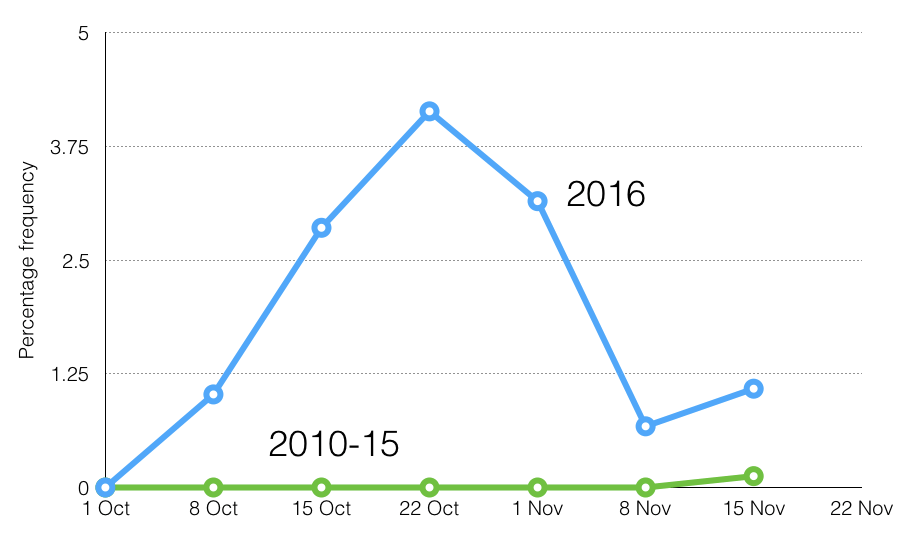Each year, the Common Cuckoo Cuculus canorus undertakes a marathon journey from its breeding grounds in the trans-Himalayan region and further north in China and passes through the subcontinent enroute its wintering range in Africa. This route has been further elucidated by the Beijing Cuckoo Project, which has been tracking cuckoos satellite-tagged around Beijing earlier this year.
This species, usually recorded by birders in southern India for a brief period of time during the autumn passage, has been (and is still being) seen unusually often this year all over peninsular India. Reports have been coming in with a high frequency from the states of Maharashtra, Goa, Karnataka, and Kerala.
Over the months of October and November 2016, the Common Cuckoo was recorded in Karnataka and Kerala in as many as 4.9% and 4.14% of all (complete) checklists submitted respectively. For the same period of months over 2010-2015, it was recorded (at its peak) in 1.5% and virtually none of all complete checklists for Karnataka and Kerala respectively.

Frequency of occurrence of Common Cuckoos in Kerala in 2016 and from 2010-2015
Have you been seeing any Common Cuckoos in your region? Do remember to report your sightings on eBird. To check out where all this cuckoo has been reported from India, view its range map.
Where the Himalayan Cuckoo Cuculus saturatus is not present, you can tell the Common Cuckoo apart from other Cuckoo species (especially Indian Cuckoo and the much smaller Lesser Cuckoo) by its large size, cuculus-like structure, long wings, fine barring on underparts, yellow iris, lack of contrast between head and mantle/back and the absence of a subterminal tail band.





